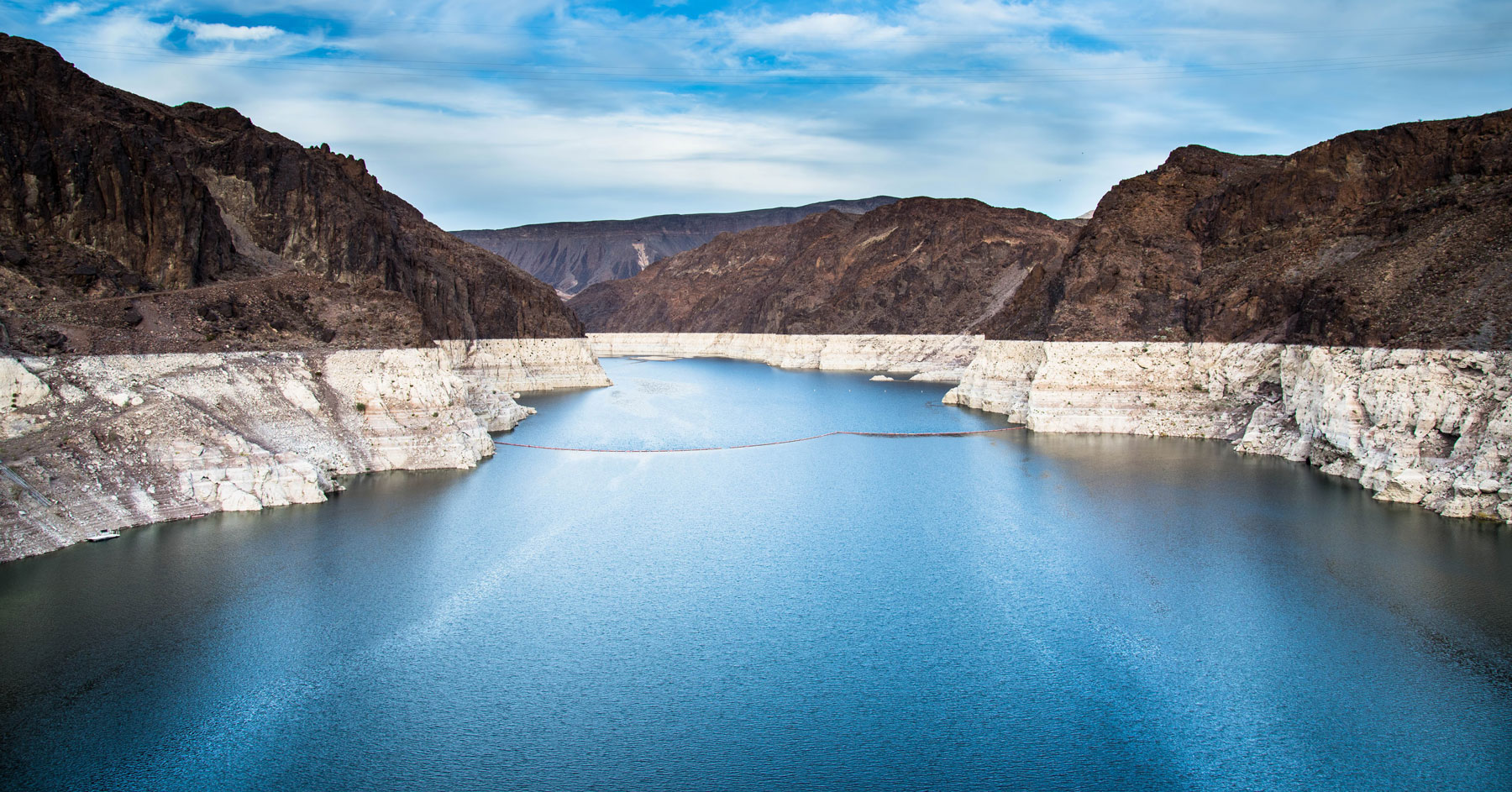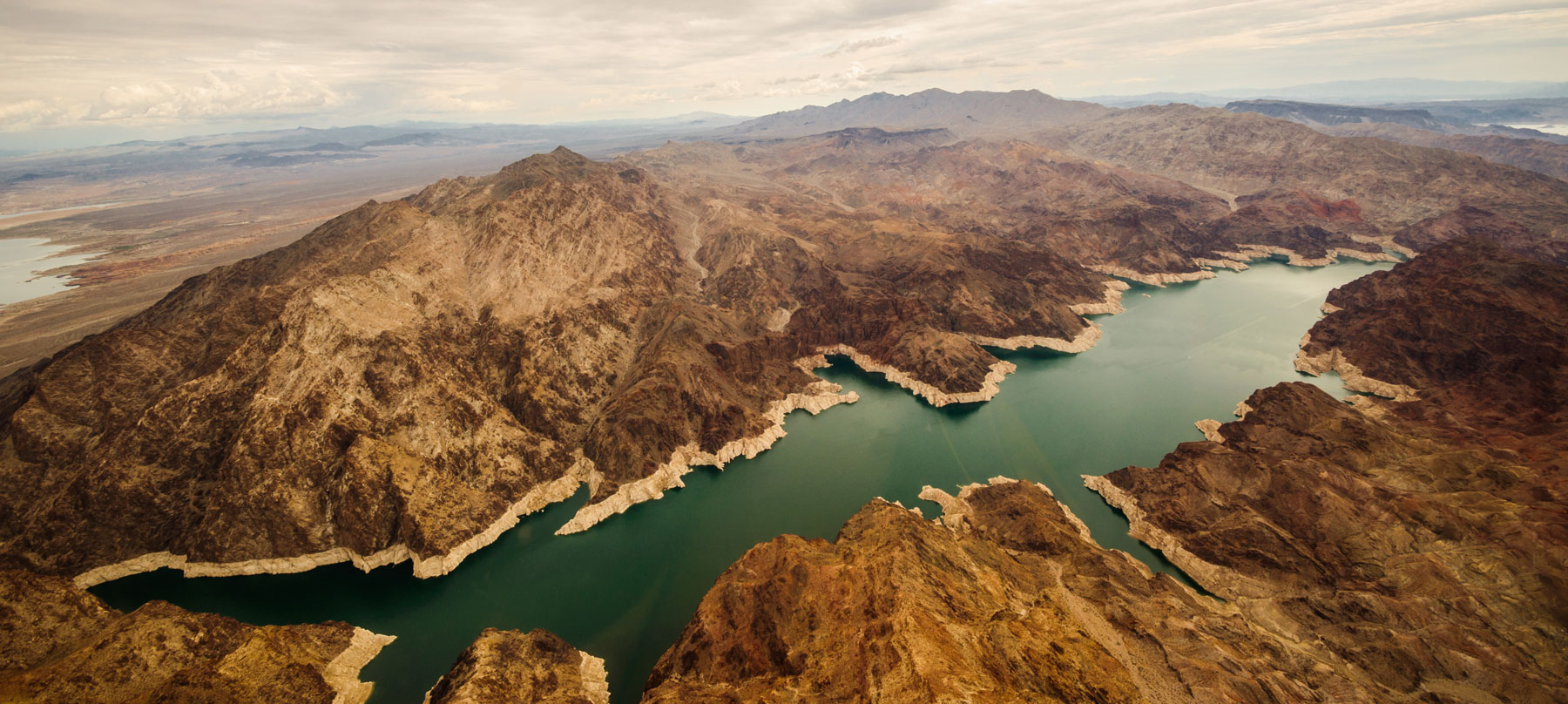The effects of climate change in Nevada are intensifying.
In August 2021, the U.S. Bureau of Reclamation for the first time declared a water shortage on the Colorado River system, the source of 90% of the water supply for southern Nevada. The bureau ordered mandatory cuts in water deliveries, seizing the attention of leaders charged with addressing climate change and developing water policy across the American Southwest.
Nevada’s climate action began two decades ago, when it established ambitious renewable portfolio standards. In 2013, the state also passed legislation to replace all of the state’s coal-fired power plants. Only two coal plants are still operating, and they are scheduled to be retired in 2025.
Nevada lawmakers passed a measure in 2019 setting a goal of zero greenhouse gas emissions, economy-wide, by 2050. Governor Steve Sisolak also issued an executive order creating the Nevada Climate Initiative, calling for improvements in energy efficiency and encouraging a rapid transition to electric vehicles (EVs), heat pumps, and renewable energy generation.
With the transportation sector responsible for the largest amount of greenhouse gas emissions in the state, emphasis on EVs and the clean energy needed to power them has been the focus of much of WRA’s work in Nevada.
The Nevada Electric Highway project began in 2015 as a collaboration between the Governor’s Office of Energy and utilities throughout the state. The goal of installing EV charging stations every 50 miles on state highways is close to being met and has resulted in increasing enthusiasm for EVs among Nevada drivers. With a pilot program offering a $2,500 rebate to low-income families buying EVs, coupled with the reliable network of charging stations, the state has seen a 133% increase in EV registrations since 2019.
This progress has been encouraging, and WRA is optimistic about Nevada’s clean energy future.
WRA has worked to mobilize a task force examining regional transmission organizations or independent system operators as a means to access and move renewable energy across the region. Members of the task force include representatives from the state’s utilities, data centers, casinos, environmental groups, and the Legislature. Nevada’s participation in a regional transmission organization (RTO) by 2030 would play a crucial role in helping the state meet its goal of zero greenhouse gas emissions by 2050.
WRA is also working with utilities to develop new strategies for energy efficiency programs, as well as distributed energy resources such as batteries, to save customers money.
Given the potential for solar energy generation in sunny Nevada and the enormous demand for power in California, grid modernization in the state could be a model for the rest of the country.

Transitioning the Power Sector in Nevada
Nevada proudly was the second state in the nation to establish a renewable portfolio standard in 1997 and has since been deliberate in its efforts to meet ever-higher goals.
More ambitious goals were approved throughout the 2000s, and bipartisan legislation enacted in 2019 set the stage for the state to produce 50% of its energy supply from renewables by 2030. In 2021, the Legislature required utilities to file a plan to reduce carbon-dioxide emissions 80% by the end of this decade.
As a result, only two coal-fired power plants still operate in the state, and they are scheduled for decommissioning in 2025. The share of energy generated by coal dropped from more than 50% in 2003 to 6% in 2021.
More than 2 gigawatts of power from renewable resources are poised to come online in 2023. Renewable energy sources – primarily solar, geothermal, and hydroelectric power – provided 33% of the state’s electricity in 2021.
On Nevada’s vast tribal lands, solar energy is the primary source of power and a key source of revenue for the Indigenous nations who sell excess power to California.
The 250-megawatt Moapa Southern Paiute Solar Project north of Las Vegas is one of the largest utility-scale solar installations in Nevada and soon will be followed by even larger solar projects under development on tribal lands across the state.
To keep the momentum going, WRA is participating in and working to support the 24-member Regional Transmission Coordination Task Force charged with developing policies for joining an RTO.
As with most states, modernizing the electric grid is critical to Nevada’s plan for a rapid and affordable transition of the power sector to renewable energy.
More than 600 miles of new transmission lines are under construction in the Greenlink Nevada project, a triangle of lines that will connect major markets in the state to areas with solar and geothermal energy resources.

Years Of Success Working On Clean Energy In Nevada
2021
Green House Gas Reductions
Achieved legislation requiring Nevada utilities to plan a path to achieve an 80% reduction in greenhouse gas emissions by 2030.
2021
Electric Vehicle Infrastructure
Passed legislation allotting $100 million to support electric vehicle infrastructure, which is vital to regional car-based tourism in Nevada and reduces the leading source of greenhouse gas emissions in the state.
2021
Green House Gas Reductions
Achieved legislation requiring Nevada utilities to plan a path to achieve an 80% reduction in greenhouse gas emissions by 2030.
2021
Clean Cars
Helped adopt a crediting system as part of a Clean Cars program, offering a promising model for other states and allowing greater choice in electric vehicles, all while addressing climate change.
2019
Ambitious Goals
Worked with the Nevada Legislature to increase the state’s renewable portfolio standard to 50% renewables by 2030.
2013
Energy Efficiency Investment
Helped secure $16.8 million per year in additional energy efficiency funding by influencing Nevada utility resource planning.
2009
Clean Energy
Convinced NV Energy and LS Power to indefinitely postpone two coal plant proposals in Nevada and to add renewable energy resources.
2006
Grassroots Mobilization
Halted a large coal plant that had been planned near Gerlach by leading a coalition effort.
2005
Transition from Coal
Helped establish the Nevada Clean Energy Campaign, a broad coalition that stopped a large coal-fired power plant proposed for northern Nevada.
2001
Cutting Edge Support for Renewable Energy
Helped pass some of the country’s earliest renewable portfolio standards, directing utilities to provide a certain percentage of their power from renewable resources like solar, wind, and geothermal.

